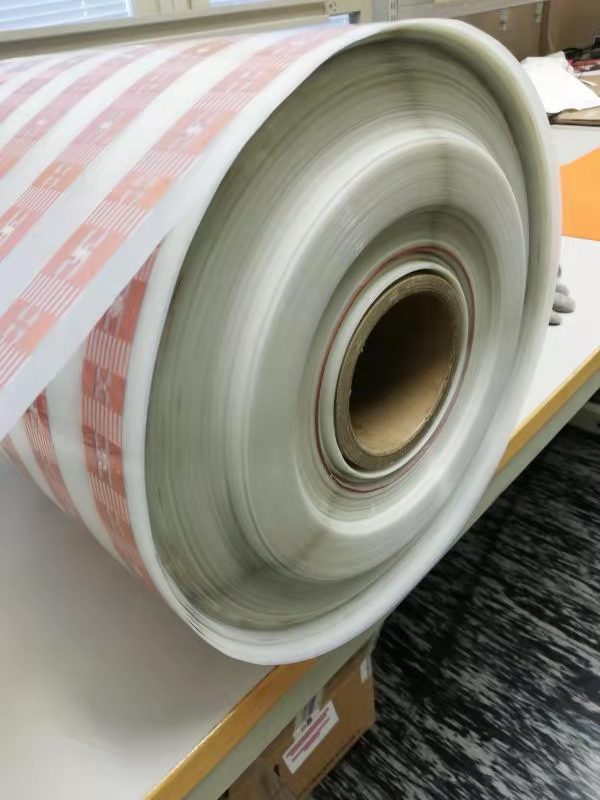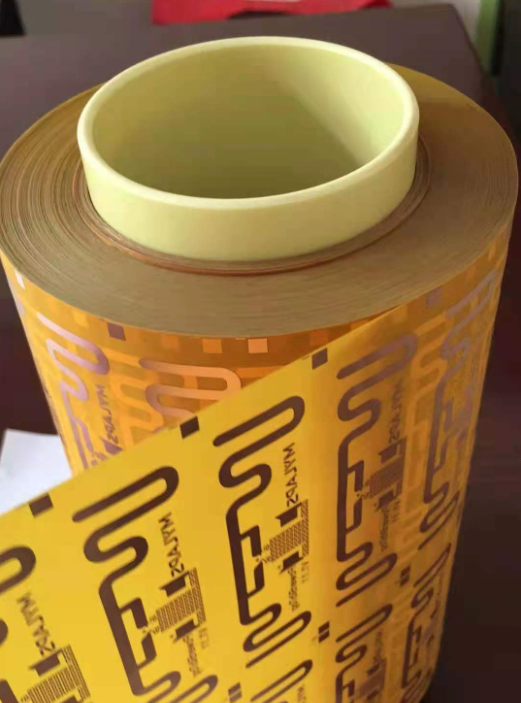What is Ultra Long Flex PCB?
The Ultra Long Flex PCB is a new frontier in flexible PCB technology. As an extension of flexible PCBs, the ultra-long flex PCB has a length-to-width ratio of more than 10:1, which makes it an ideal solution for modern electronic devices that demand compact designs and intricate circuitry. This article will explore ultra-long flex PCBs' technology, design, and manufacturing processes. We will also examine the potential applications of ultra-long flex PCBs in various industries, such as aerospace, medical devices, and automotive. The research will provide a comprehensive understanding of this new technology, which has significantly contributed to the electronics industry.
Introduction
1.1 Background
Printed circuit boards (PCBs) are the backbone of modern electronics. They provide a platform for electronic components to connect and interact with each other. In recent years, flexible PCBs have gained popularity due to their ability to adapt to different shapes, sizes, and form factors. Flexible PCBs can bend, twist, and conform to various surfaces, making them ideal for wearable, aerospace, medical, and other applications where space is at a premium. As the demand for more complex and compact designs increases, new types of flexible PCBs are emerging. One such type is the Ultra Long Flex PCB.
1.2 Ultra Long Flex PCB
The Ultra Long Flex PCB is a type of flexible PCB with a length-to-width ratio of more than 10:1. It is a new frontier in flexible PCB technology that has gained increasing attention from the industry and academia. The Ultra Long Flex PCB design is unique in that it allows for complex circuitry and signal routing in a compact and flexible form factor. With the development of new materials and manufacturing techniques, the Ultra Long Flex PCB has become a viable solution for many applications, such as high-speed data transmission, antenna systems, and wearable devices.
1.3 Flexible PCB manufacturer
Flexible PCB manufacturers are specialized in producing flexible printed circuit boards, including the Ultra Long Flex PCB. They utilize advanced fabrication processes and materials to create high-quality, reliable, durable, and flexible PCBs. The production process involves various steps: design, material selection, penalization, routing, testing, and quality control. A flexible PCB manufacturer must have the expertise and technology to produce PCBs that meet the stringent requirements of different industries.
The technology of Ultra Long Flex PCBs
2.1 Materials
The materials used in Ultra Long Flex PCBs are similar to those used in standard flexible PCBs but with some modifications to accommodate the extended length of the circuit. The substrate material in Ultra Long Flex PCBs is typically polyimide, a high-performance polymer that can withstand high temperatures and resist mechanical stress. Polyimide is an excellent material for Ultra Long Flex PCBs because it is flexible, lightweight, and durable.
2.2 Design
The design of Ultra Long Flex PCBs is crucial to their performance and reliability. Due to the length of the circuit, the plan must take into account the electrical and mechanical properties of the materials used, as well as the signal routing and power distribution. The design process involves:
- Selecting the appropriate materials.
- Defining the shape and size of the PCB.
- Determining the routing of the circuitry.
The design also considers the various environmental conditions the PCB will be exposed to, such as temperature, humidity, and vibration.
2.3 Manufacturing
The manufacturing of Ultra Long Flex PCBs is a complex process that involves multiple steps. The first step is fabricating the substrate material, typically done by a roll-to-roll process. The substrate is then coated with a layer of copper or other conductive material, followed by the addition of a photoresist layer. The photoresist layer is then exposed to light, which creates a pattern that defines the circuitry. The circuit is then etched away, leaving behind the desired circuit pattern. After the course has been described, the substrate is coated with a protective layer to prevent damage during handling and assembly.
Applications of Ultra Long Flex PCBs
3.1 Aerospace
The aerospace industry is one of the significant beneficiaries of Ultra Long Flex PCBs. With the increasing demand for lightweight, compact, and efficient electronic systems in spacecraft and satellites, Ultra Long Flex PCBs offer a viable solution for designing and fabricating complex circuits. The flexibility of the PCBs allows for easy integration into the limited space available in aerospace systems. At the same time, their ability to withstand harsh environmental conditions makes them an ideal choice for use in the room.
3.2 Medical Devices
Ultra Long Flex PCBs have also found applications in the medical device industry. The flexible and compact nature of PCBs allows for the design and fabrication of devices that can conform to the body, such as wearable devices, implantable devices, and monitoring systems. Using Ultra Long Flex PCBs in medical devices also reduces the need for bulky and heavy components, which can improve the comfort and mobility of patients.
3.3 Automotive
The automotive industry is another potential beneficiary of Ultra Long Flex PCBs. As the demand for more advanced and sophisticated electronic systems in cars increases, Ultra Long Flex PCBs offer a viable solution for designing and fabricating compact and reliable circuits. The flexibility of the PCBs allows for easy integration into the limited space available in cars. At the same time, their ability to withstand high temperatures and vibrations makes them an ideal choice for use in automotive systems.
Challenges and Future Directions
4.1 Challenges
The development and implementation of Ultra Long Flex PCBs come with several challenges. One of the primary challenges is the reliability of the circuit, which is critical to the device's performance. Ultra Long Flex PCBs design and fabrication require precise control over the material properties, signal routing, and power distribution, which can be difficult to achieve. Another challenge is the cost of manufacturing, which can be higher than regular flexible PCBs due to the increased complexity and length of the circuit.
4.2 Future Directions
Despite the challenges, the future of Ultra Long Flex PCBs is promising. With the continued development of new materials and fabrication techniques, the reliability and cost of Ultra Long Flex PCBs are expected to improve. Additionally, the demand for compact and lightweight electronic systems in various industries is expected to increase, driving the need for more advanced and sophisticated PCB designs.
One potential future direction for Ultra Long Flex PCBs is the integration of nanomaterials and nanotechnology. Nanomaterials, such as graphene and carbon nanotubes, offer unique electrical and mechanical properties that can enhance the performance of Ultra Long Flex PCBs. For example, using graphene in the conductive layer of Ultra Long Flex PCBs can improve the electrical conductivity and reduce the circuit's resistance, leading to more efficient and reliable devices.
Another future direction for Ultra Long Flex PCBs is integrating 3D printing technology. 3D printing allows for the fabrication of complex and intricate shapes that are difficult to achieve with traditional manufacturing techniques. 3D printing in Ultra Long Flex PCBs can lead to the development of custom-designed and tailored circuits that can meet various industries' specific requirements.
The manufacturing method of high-frequency microwave ultra-long circuit flex board
In the industry, the circuit board with a length of more than 1000mm is called ultra long circuit board. Due to the flexness of PTFE, the inner dielectric material of high-frequency circuit board, the flex PCB board with a thickness of less than 0.5mm is easy to deform due to its flex and thin substrate, strong internal stress and tension, The tension of copper foil is not consistent with the internal stress and the base material of the high-frequency PCB, which is far less than the base material, forcing the internal stress and tension of the base material to be unable to release, and the base material is temporarily in a stable state. After the etching and grinding process, most of the copper foil layer on the plate surface disappears, leaving only the effective line copper foil, and the internal stress of the copper foil disappears. At this time, the internal stress of the base material is released, and the tension expands, resulting in the deformation of the plate.

This paper introduces a method of making a high-frequency microwave ultra-long circuit flex board:
According to the size requirements, the automatic cutting shears are used to cut the boards to produce the flex boards with a length of more than 1000mm and the thickness of less than 0.5mm;

The flex circuit board was cleaned with 3-6% H2SO4 solution, and the grinding section was brushed with 8-16% silicate solution; First, wet film the circuit flex board after grinding for the first time, then light painting, exposure, development, check after development, then etch and cool; Wet the thick circuit board for the second time, then light painting, exposure, development, check after development, then etching, and finally cooling; Drilling, grinding, coating anti-oxidation film, edge milling, finished product inspection and packaging are used to get the finished product.
The high frequency microwave ultra-long circuit flex board produced by the invention has the advantages of low production cost, good reliability, excellent dimensional stability, non-deformation of board surface aperture and figure, and one-time improvement of product qualification rate.
conclusion
Ultra Long Flex PCBs offer a viable solution for designing and fabricating complex and sophisticated circuits in various industries. The flexibility, lightweight, and durable nature of the PCBs make them ideal for use in aerospace, medical devices, automotive, and other industries. However, the development and implementation of Ultra Long Flex PCBs come with several challenges, such as reliability and cost. With the continued growth of new materials and fabrication techniques, the future of Ultra Long Flex PCBs is promising. Integration of nanomaterials, nanotechnology, and 3D printing technology are some potential future directions for Ultra Long Flex PCBs.





